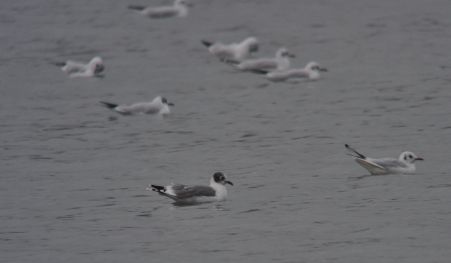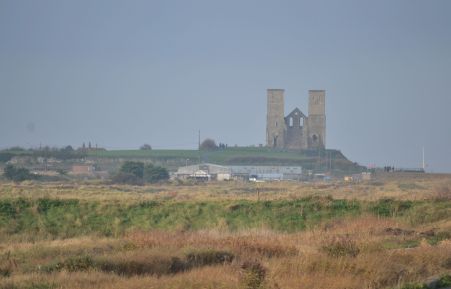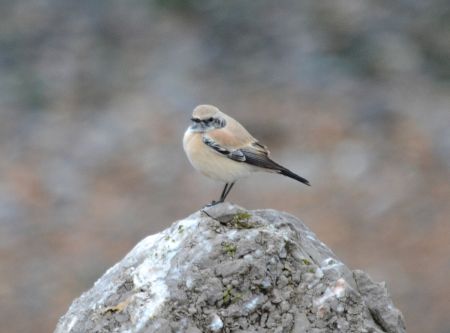Yesterday should have been an uplifting experience but when I got home a communication from Kent Police was lying on my doormat. Having tried really hard to be careful since my last SP30 it depressed me to have been caught out for a minor lapse in concentration again. So it was some consolation to read on RBA that an Isabelline Shrike had been in east Dorset all day, a mere two-hour drive from Oxford. That was a must see after missing this lifer in Norfolk just recently. And if I didn’t set off too early I would be ideally placed to catch up with the Franklin’s Gull that had been coming in to roost at Blashford Lakes near Ringwood, Hants.
Still feeling down this morning whilst waiting for news of the Shrike’s continued presence, the alternative of paying attention to my Oxon year list held no appeal. I needed to be out on the road for a second day, whatever the risks. The “Izzy” was favouring an area just north of the approach to Hengistbury Head on the seaward side of Christchurch Harbour. When I arrived there at just before midday several observers were already on the bird, so I saw it immediately. Once more there are no prizes for the record shot, attempted in dull and drizzly conditions that persisted throughout my stay.
Isabelline Shrike belongs to an Asian group that are closely related to Red-backed Shrike. Whenever one is reported on RBA there is a discussion as to which of three very similar species it is most likely to be. The cinnamon coloured tail of today’s first winter bird is diagnostic, and there are other plumage details that I will not pretend to be familiar with. After a coffee break at a nearby café I retrieved my digiscope collar, but the bird did not care to show itself again before I moved on to Blashford Lakes nature reserve.
It was raining heavily when I got to Ibsley Water in the Blashford Lakes complex at 2:50pm. Other birders told me the hide here has been very crowded of late at gull roost time, but it was dry inside and I gained the advantage of a seat. There was a good natured ambience as all present waited for the star north American gull to make it’s daily, late afternoon appearance. After 30 minutes or so I turned round to find Oxonbirder Adam Hartley (aka Gnome) standing behind me, and I was also keeping in contact with Andy Last who had seen the gull previously. Not much chance of missing it then! Just before 3:30pm a murmur went up at one end of the hide and I immediately picked up the Franklin’s Gull in my own scope. This adult winter bird was very distinctive as the digiscoped image below shows, and it was apparently much closer to the hide than usual.
So this was a two-lifer day and a good antidote to having fallen foul of the Exchequer whilst trying to enjoy another nice day out a week earlier. Picking out the gull for myself in a hide full of birders was the more satisfying of the two experiences, but I have a good record on Shrikes and so appreciated the latest addition to their kind as well. The warm glow of a successful twitch has a medicinal value, so I felt in much better spirits on my drive home than on the way out this morning.








